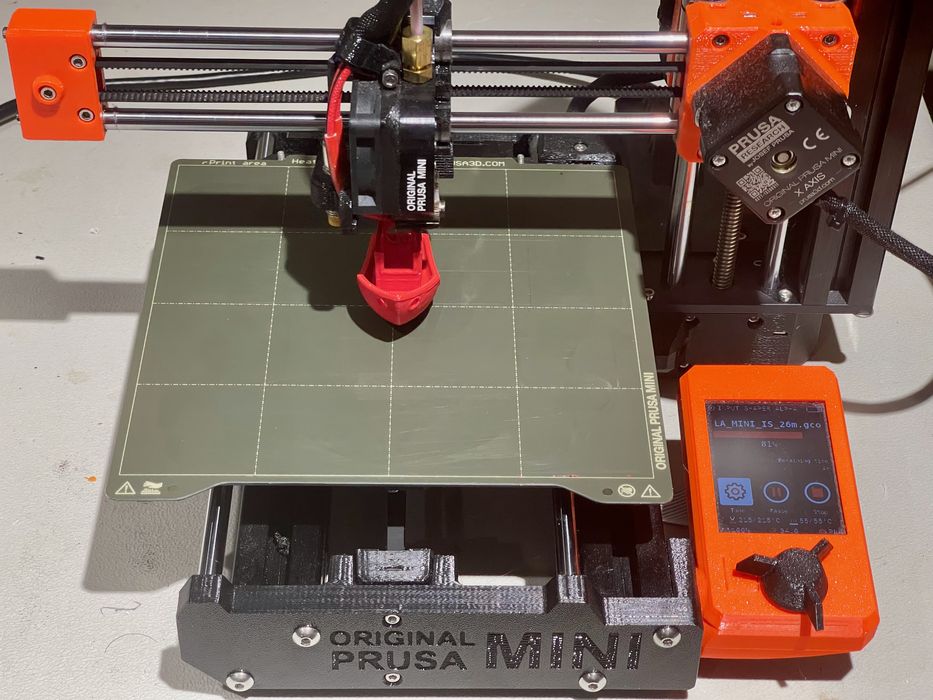
Prusa Research made their Mini 3D printer run a lot faster, and we gave it a test.
I haven’t used our Prusa Mini for quite a while as we’ve been testing other equipment, but it was fun to get back on this tiny 3D printer. It’s known for its simple design and quality results, in spite of the cantilevered design that is less robust than other machine styles.
You can read our original review of the Prusa Mini here.
With the recent introduction of many high speed desktop 3D printers, devices like the Prusa Mini are beginning to fade away: operators are more attracted to machines that run 3-5X faster.
Prusa Research itself is aware of this issue, and has been building higher speed machines like the XL and MK4. But in a surprise they recently announced some experimental firmware for the Mini that would make it run far faster.
I was very curious about this, because the Mini is not the style of machine you’d expect to run at high speeds. Typically you require a robust frame, specialized components and more to go along with the high speed firmware.
But somehow, Prusa Research did this. By merely upgrading the machine’s firmware and using some new print profiles, it is able to print far faster than it had before.
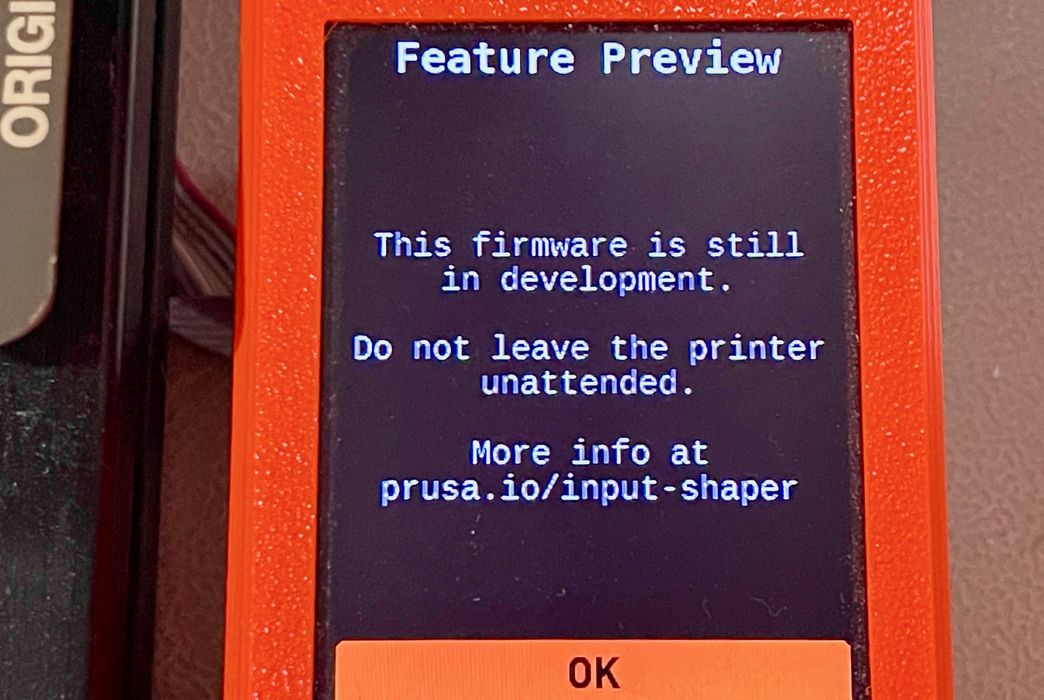
The first thing we noticed was that the machine now presents a warning upon boot up. The message suggests not leaving the machine unattended because the firmware is still experimental. That seems reasonable.
I attempted printing two sliced models of the #3DBenchy. One adhered to the #SpeedboatRace rules, while the other did not.
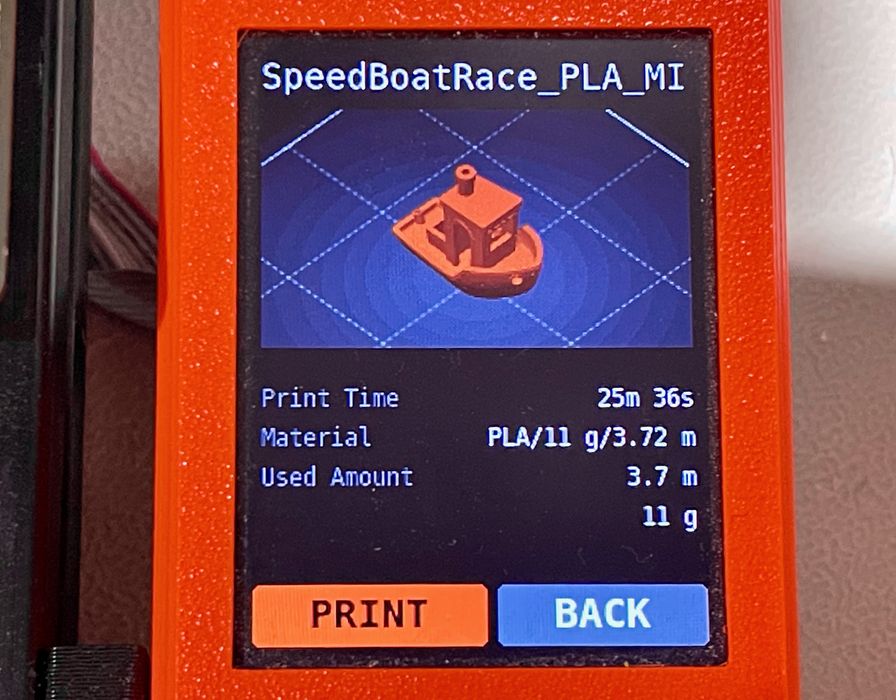
The first #SpeedboatRace print succeeded on the first try, and the elapsed time for the print was only 26 minutes. That’s far faster than a typical #3DBenchy print on the Mini, which can take around 90 minutes.
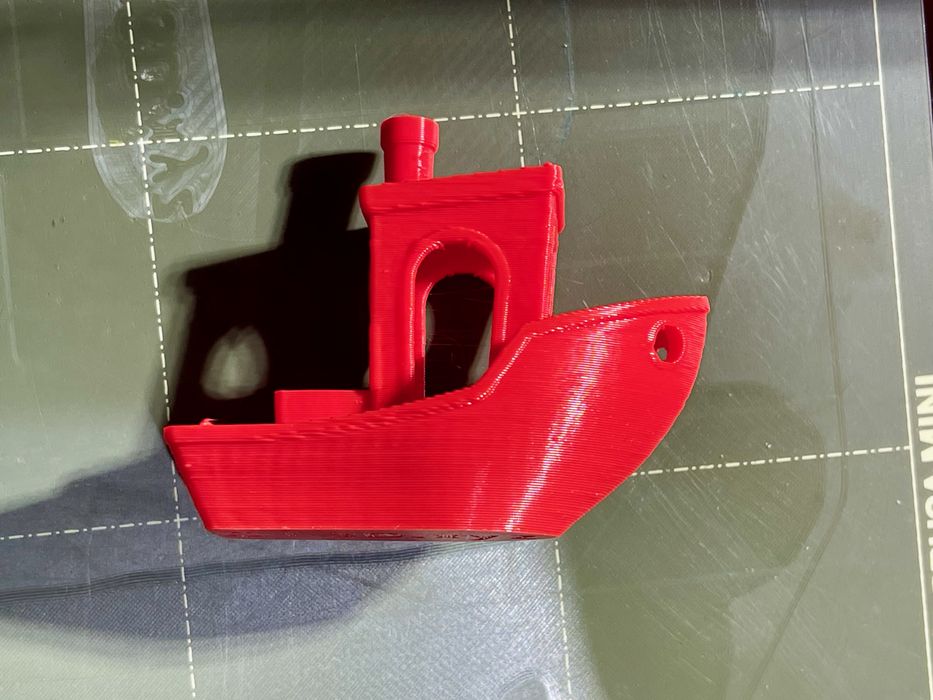
Did the quality of the print suffer? Apparently not, as it looks pretty decent to me.
Even the bottom of the print was quite good, unlike some other high speed machines I’ve tested with this model.
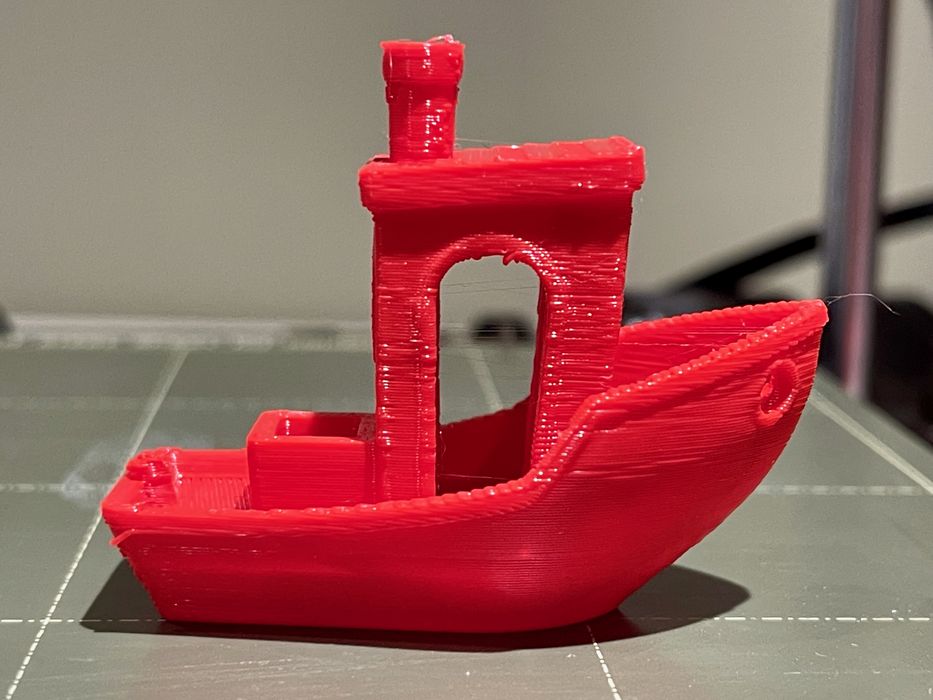
Then I tried the other #3DBenchy print, which completed more quickly because of fewer walls, less infill, etc. It completed in only 16 minutes, the fastest #3DBenchy I’ve seen on a Mini.
The quality of this print was somewhat less than the other one, but still good. There was a slight bit of stringing, but otherwise it was OK.
Evidently Prusa Research figured out how to make all this work nearly perfectly, but I was very curious about how they did it.
One big question was the lack of an accelerometer on the Prusa Mini. An accelerometer is typically required for high speed machines to calibrate themselves. Normally the calibration involves moving the X and Y axes at very high frequencies in order to measure the effects. These are then translated into adjustment factors that compensate for those vibrations when printing at high speed.
If the Prusa Mini has no accelerometer and did not perform this calibration, how, exactly, did Prusa Research make this work?
The answer is hidden in the machines settings.
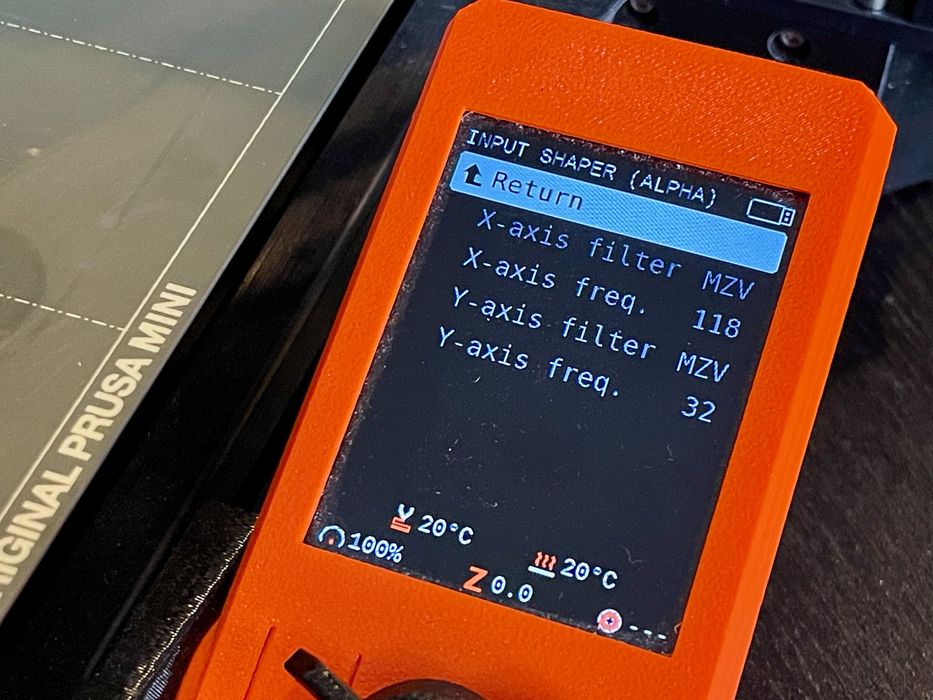
Here we see the input shaper parameters that appear after the firmware upgrade. We didn’t put these in, nor did any calibration routine take place.
Apparently Prusa Research simply hard-coded them!
They must have done many tests on Prusa Minis equipped with accelerometers, and developed these parameters. Then they were encoded into the firmware and distributed to Prusa Mini operators.
This works only because the Prusa Mini devices are all nearly identical in hardware configuration. The weight of the toolhead, for example, would be about the same for each machine.
The implication is that the firmware might not work if one had modified their Prusa Mini, specifically if the weights of the toolhead were changed. For example, if a heavier nozzle were swapped in, I don’t know what might happen.
Nevertheless the vast majority of Prusa Mini operators don’t mess with their machine’s hardware, so this firmware update will almost certainly work for them.
This also demonstrates a way for other machine manufacturers to consider providing firmware upgrades for their non-accelerometer equipment.
Prusa Research hasn’t yet made an official release of this Mini firmware, but it’s no doubt in the works.
Via Prusa Research
